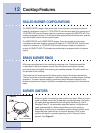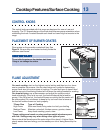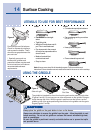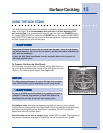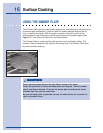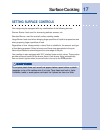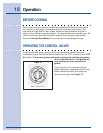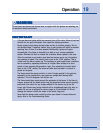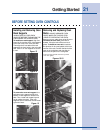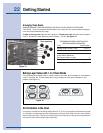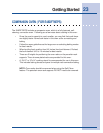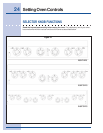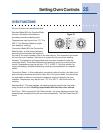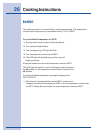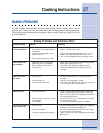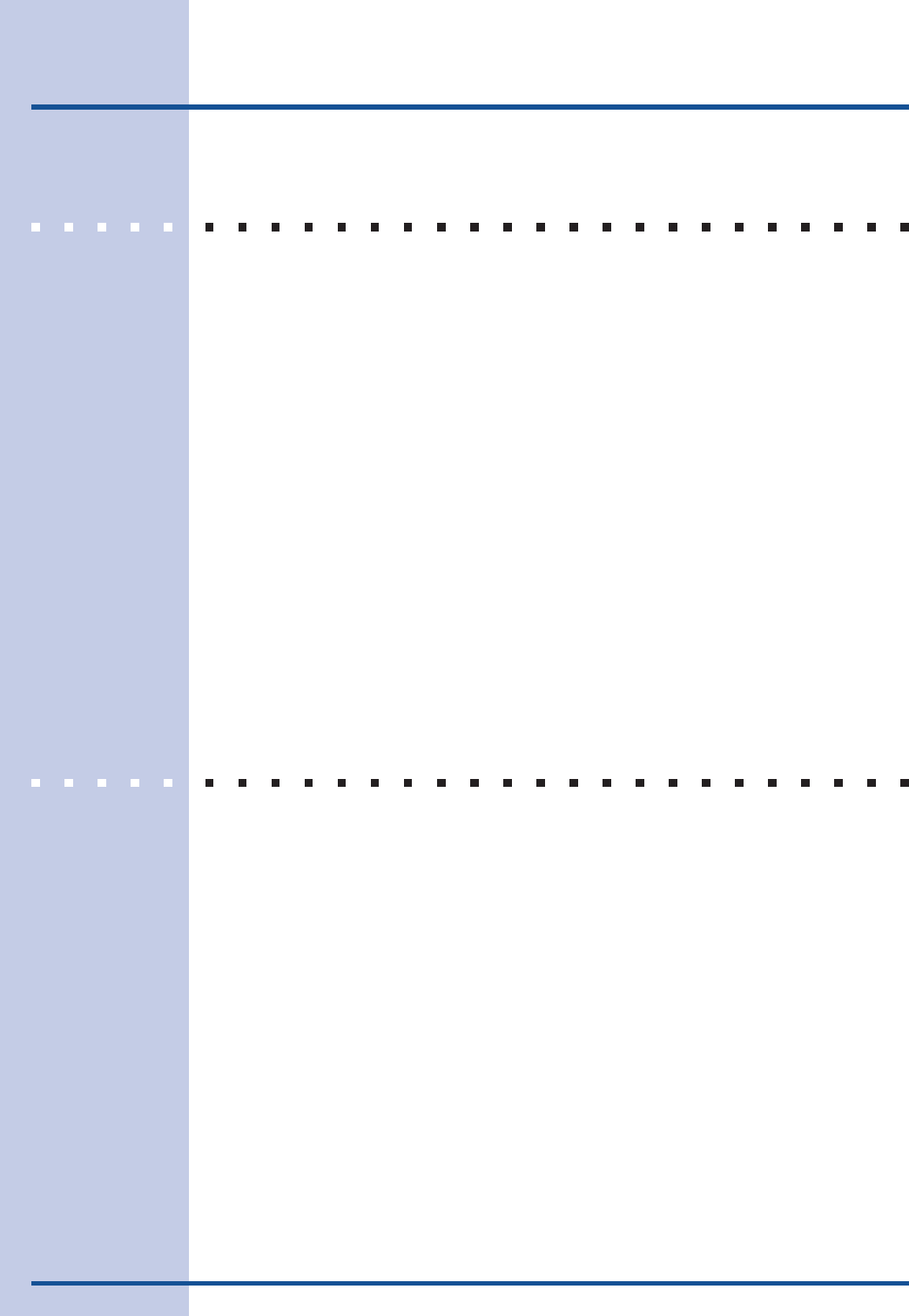
20
Operation
SETTING THE BURNER FLAME HEIGHT
Setting the proper burner flame height for the desired cooking process and
selected utensil will result in superior cooking performance, while also saving time
and energy. Follow these recommendations for best results:
1. Use low or medium flame heights when cooking in utensils that are poor
conductors of heat, such as glass, ceramic, and cast iron cooking vessels.
Reduce the flame height until it covers approximately 1/3 of the utensil
diameter. This will ensure even heating within the utensil and reduce the
likelihood of burning or scorching of food.
2. Reduce the flame if it is extending beyond the bottom of the utensil. A flame
that licks along the sides of the utensil is potentially dangerous, heats the
utensil handle and kitchen instead of the food, and wastes energy.
3. Reduce the flame height to the minimum level necessary to perform the
desired cooking process. Remember that food cooks just as quickly at a
gentle boil as it does at a vigorous, rolling boil. Maintaining a higher boil than is
necessary wastes energy, cooks away moisture, and causes a loss in food
flavor and nutrient level.
ENERGY SAVING TIPS
• Always use utensils with flat, smooth bottoms and tight-fitting lids to retain
heat and moisture.
• Minimize the amount of liquid or fat to reduce cooking times.
• Select cookware of the proper size, material and construction for the cooking
process being performed.
• Adjust the flame height to fit the utensil size.
• After liquid reaches a boil, reduce the heat to maintain a simmer rather than a
rolling boil.
• Use a timer rather than repeatedly removing the lid to check food.
• Thaw foods prior to cooking to reduce cooking time.



